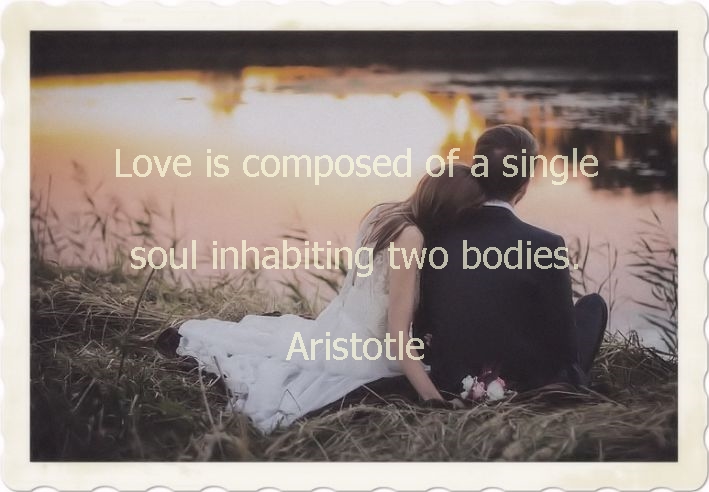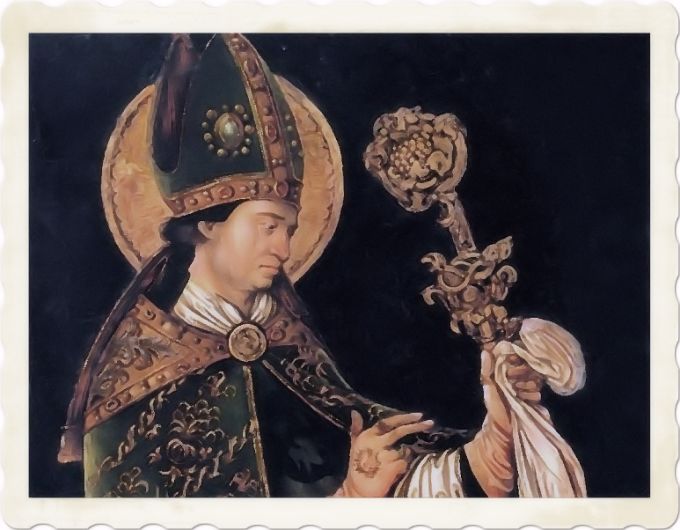
Saint Valentines Day. Without Valentine’s Day, February would be… well, January.
Jim Gaffigan
I claim there ain’t Another Saint As great as Valentine.
Ogden Nash
If you are really interested in this topic and you want more quotes you can also download and read this book of Quotes and aphorisms on Love Edited by Carl William Brown

Oh, if it be to choose and call thee mine, love, thou art every day my Valentine!
Thomas Hood
Other men it is said have seen angels, but I have seen thee and thou art enough.
George Edward Moore
I got a Valentine’s Day card from my girl. It said, ‘Take my heart! Take my arms! Take my lips!’ Which is just like her. Keeping the best part for herself.
Robert Orben
Love is a smoke made with the fume of sighs.
William Shakespeare
Love is not finding someone to live with; it’s finding someone you can’t live without.
Raphael Montanez Ortiz
Love looks not with the eyes, but with the mind, And therefore is winged Cupid painted blind.
William Shakespeare
God is a mystery, Faith is a mystery, Love is a mystery, Death is a mystery! Hey, but wait a bit, I have never liked mysteries.
Carl William Brown
The supreme happiness of life is the conviction that we are loved.
Victor Hugo
Love is the poetry of the senses.
Honore de Balzac
Love is composed of a single soul inhabiting two bodies.
Aristotle
Love is a game that two can play and both win.
Eva Gabor
When love is not madness, it is not love.
Pedro Calderon de la Barca
Gravitation is not responsible for people falling in love.
Albert Einstein

One word Frees us of all the weight and pain of life: That word is love.
Sophocles
We loved with a love that was more than love.
Edgar Allan Poe
Men always want to be a woman’s first love – women like to be a man’s last romance.
Oscar Wilde
Being deeply loved by someone gives you strength, while loving someone deeply gives you courage.
Laozi
Come grow old with me. The best is yet to be.
William Wordsworth
Sympathy constitutes friendship; but in love there is a sort of antipathy, or opposing passion. Each strives to be the other, and both together make up one whole.
Samuel Taylor Coleridge
If my Valentine you won’t be, I’ll hang myself on your Christmas tree.
Ernest Hemingway
If only St. Valentine was around to see his memory celebrated through the mindless marketing of whipping cream and lingerie.
Dov Davidoff
If love is blind, why is lingerie so popular?
Dorothy Parker
Love cures people – both the ones who give it and the ones who receive it.
Karl A. Menninger
Today is Valentine’s Day – or, as men like to call it, Extortion Day!
Jay Leno
from your Valentine
Saint Valentine (Italian: San Valentino, Latin: Valentinus) known as Saint Valentine of Rome was a widely recognized 3rd-century Roman saint, commemorated in Christianity on February 14. The name “Valentine” derived from valens (worthy, strong, powerful), was popular in Late Antiquity. About eleven other saints having the name Valentine are commemorated in the Roman Catholic Church.
From the High Middle Ages his Saints’ Day has been associated with a tradition of courtly love. He is also a patron saint of epilepsy, which is a central nervous system (neurological) disorder in which brain activity becomes abnormal, causing seizures or periods of unusual behavior, sensations, and sometimes loss of awareness.

Valentine’s Day occurs every February 14. Across the United States and in other places around the world, candy, flowers and gifts are exchanged between loved ones, all in the name of St. Valentine. But who is this mysterious saint and where did these traditions come from? Find out about the history of Valentine’s Day, from the ancient Roman ritual of Lupercalia that welcomed spring to the card-giving customs of Victorian England.
The history of Valentine’s Day, and the story of its patron saint, is therefore shrouded in mystery. We do know that February has long been celebrated as a month of romance, and that St. Valentine’s Day, as we know it today, contains vestiges of both Christian and ancient Roman tradition. But who was Saint Valentine, and how did he become associated with this ancient rite?
Saint Valentine was a clergyman, either a priest or a bishop, in the Roman Empire who ministered to persecuted Christians. He was martyred and his body buried at a Christian cemetery on the Via Flaminia close to the Ponte Milvio to the north of Rome, on February 14, which has been observed as the Feast of Saint Valentine (Saint Valentine’s Day) since 496 AD.
Relics of him were kept in the Church and Catacombs of San Valentino in Rome, which “remained an important pilgrim site throughout the Middle Ages until the relics of St. Valentine were transferred to the church of Santa Prassede during the pontificate of Nicholas IV”. His skull, crowned with flowers, is exhibited in the Basilica of Santa Maria in Cosmedin, Rome; other relics of him were taken to Whitefriar Street Carmelite Church in Dublin, Ireland, where they remain; this house of worship continues to be a popular place of pilgrimage, especially on Saint Valentine’s Day, for those seeking love.
The Catholic Encyclopedia and other hagiographical sources speak of three Saints Valentine that appear in connection with February 14. One was a Roman priest, another the bishop of Interamna (modern Terni, Italy) both buried along the Via Flaminia outside Rome, at different distances from the city. The third was said to be a saint who suffered on the same day with a number of companions in the Roman province of Africa, of whom nothing else is known.
Saint Valentine is commemorated in the Anglican Communion and the Lutheran Churches on February 14. In the Eastern Orthodox Church, he is recognized on July 6; in addition, the Eastern Orthodox Church observes the feast of Hieromartyr Valentine, Bishop of Interamna, on July 30. In 1969, the Roman Catholic Church removed his name from the General Roman Calendar, but continues to recognize him as a saint, listing him as such in the February 14 entry in the Roman Martyrology, and authorizing liturgical veneration of him on February 14 in any place where that day is not devoted to some other obligatory celebration, in accordance with the rule that on such a day the Mass may be that of any saint listed in the Martyrology for that day.
The inconsistency in the identification of the saint is replicated in the various vitae that are ascribed to him. A common hagiography describes Saint Valentine as a priest of Rome or as the former Bishop of Terni, an important town of Umbria, in central Italy. While under house arrest of Judge Asterius, and discussing his faith with him, Valentinus (the Latin version of his name) was discussing the validity of Jesus. The judge put Valentinus to the test and brought to him the judge’s adopted blind daughter. If Valentinus succeeded in restoring the girl’s sight, Asterius would do whatever he asked.

Valentinus, praying to God, laid his hands on her eyes and the child’s vision was restored. Immediately humbled, the judge asked Valentinus what he should do. Valentinus replied that all of the idols around the judge’s house should be broken, and that the judge should fast for three days and then undergo the Christian sacrament of baptism. The judge obeyed and, as a result of his fasting and prayer, freed all the Christian inmates under his authority. The judge, his family, and his forty-four member household of adult family members and servants were baptized. Valentinus was later arrested again for continuing to evangelize and was sent to the prefect of Rome, to the emperor Claudius Gothicus (Claudius II) himself.
Claudius took a liking to him until Valentinus tried to convince Claudius to embrace Christianity, whereupon Claudius refused and condemned Valentinus to death, commanding that Valentinus either renounce his faith or he would be beaten with clubs and beheaded. Valentinus refused and Claudius’ command was executed outside the Flaminian Gate February 14, 269. Other stories suggest that Valentine may have been killed for attempting to help Christians escape harsh Roman prisons, where they were often beaten and tortured. An embellishment to this account states that before his execution, Saint Valentine wrote a note to Asterius’s daughter signed “from your Valentine”, which is said to have “inspired today’s romantic missives”, an expression that is still in use today.
Although the truth behind the Valentine legends is murky, the stories all emphasize his appeal as a sympathetic, heroic and, most importantly, romantic figure. By the Middle Ages, perhaps thanks to this reputation, Valentine would become one of the most popular saints in England and France. While some believe that Valentine’s Day is celebrated in the middle of February to commemorate the anniversary of Valentine’s death or burial, which probably occurred around A.D. 270, others claim that the Christian church may have decided to place St. Valentine’s feast day in the middle of February in an effort to “Christianize” the pagan celebration of Lupercalia.
Celebrated at the ides of February, or February 15, Lupercalia was a fertility festival dedicated to Faunus, the Roman god of agriculture, as well as to the Roman founders Romulus and Remus. To begin the festival, members of the Luperci, an order of Roman priests, would gather at a sacred cave where the infants Romulus and Remus, the founders of Rome, were believed to have been cared for by a she-wolf or lupa. The priests would sacrifice a goat, for fertility, and a dog, for purification.
They would then strip the goat’s hide into strips, dip them into the sacrificial blood and take to the streets, gently slapping both women and crop fields with the goat hide. Far from being fearful, Roman women welcomed the touch of the hides because it was believed to make them more fertile in the coming year. Later in the day, according to legend, all the young women in the city would place their names in a big urn. The city’s bachelors would each choose a name and become paired for the year with his chosen woman. These matches often ended in marriage.
Lupercalia survived the initial rise of Christianity but was outlawed, as it was deemed “un-Christian”, at the end of the 5th century, when Pope Gelasius declared February 14 St. Valentine’s Day. It was not until much later, however, that the day became definitively associated with love. During the Middle Ages, it was commonly believed in France and England that February 14 was the beginning of birds’ mating season, which added to the idea that the middle of Valentine’s Day should be a day for romance.

The English poet Geoffrey Chaucer was the first to record St. Valentine’s Day as a day of romantic celebration in his 1375 poem “Parliament of Foules,” writing, ““For this was sent on Seynt Valentyne’s day / Whan every foul cometh ther to choose his mate.” Valentine greetings were popular as far back as the Middle Ages, though written Valentine’s didn’t begin to appear until after 1400.
The oldest known valentine still in existence today was a poem written in 1415 by Charles, Duke of Orleans, to his wife while he was imprisoned in the Tower of London following his capture at the Battle of Agincourt. (The greeting is now part of the manuscript collection of the British Library in London, England.) Several years later, it is believed that King Henry V hired a writer named John Lydgate to compose a valentine note to Catherine of Valois.
Cupid is often portrayed on Valentine’s Day cards as a naked cherub launching arrows of love at unsuspecting lovers. But the Roman God Cupid has his roots in Greek mythology as the Greek god of love, Eros. Accounts of his birth vary; some say he is the son of Nyx and Erebus; others, of Aphrodite and Ares; still others suggest he is the son of Iris and Zephyrus or even Aphrodite and Zeus (who would have been both his father and grandfather).
According to the Greek Archaic poets, Eros was a handsome immortal played with the emotions of Gods and men, using golden arrows to incite love and leaden ones to sow aversion. It wasn’t until the Hellenistic period that he began to be portrayed as the mischievous, chubby child he’d become on Valentine’s Day cards. In addition to the United States, Valentine’s Day is celebrated in Canada, Mexico, the United Kingdom, France and Australia. In Great Britain, Valentine’s Day began to be popularly celebrated around the 17th century.
By the middle of the 18th, it was common for friends and lovers of all social classes to exchange small tokens of affection or handwritten notes, and by 1900 printed cards began to replace written letters due to improvements in printing technology. Ready-made cards were an easy way for people to express their emotions in a time when direct expression of one’s feelings was discouraged. Cheaper postage rates also contributed to an increase in the popularity of sending Valentine’s Day greetings. Americans probably began exchanging hand-made valentines in the early 1700s. In the 1840s, Esther A. Howland began selling the first mass-produced valentines in America.
Howland, known as the “Mother of the Valentine,” made elaborate creations with real lace, ribbons and colorful pictures known as “scrap.” Today, according to the Greeting Card Association, an estimated 145 million Valentine’s Day cards are sent each year, making Valentine’s Day the second largest card-sending holiday of the year (more cards are sent at Christmas). Women purchase approximately 85 percent of all valentines.

The 25th of January is the most romantic day of the year in Wales. As a matter of fact on this day, St. Dwynwen is celebrated. She is the Welsh patron saint of lovers. Dydd Santes Dwynwen is the Welsh equivalent of St. Valentine’s day. She was a fourth-century princess, who was unlucky in love. She became a nun and prayed for others to have better luck.
You can also read the posts about:
Find out what Shakespeare thought on love
reading our Dictionary of Shakespeare quotes
But if you are really interested in this topic and you want more quotes you can also download and read this book of Quotes and aphorisms on Love Edited by Carl William Brown

